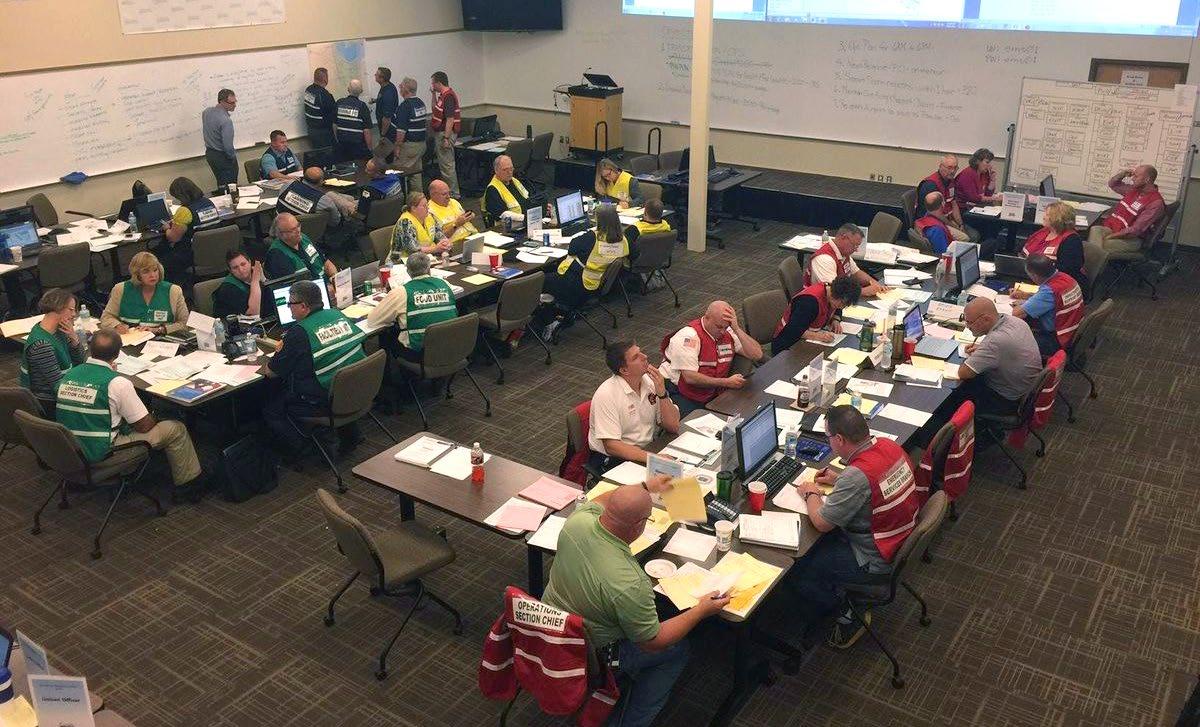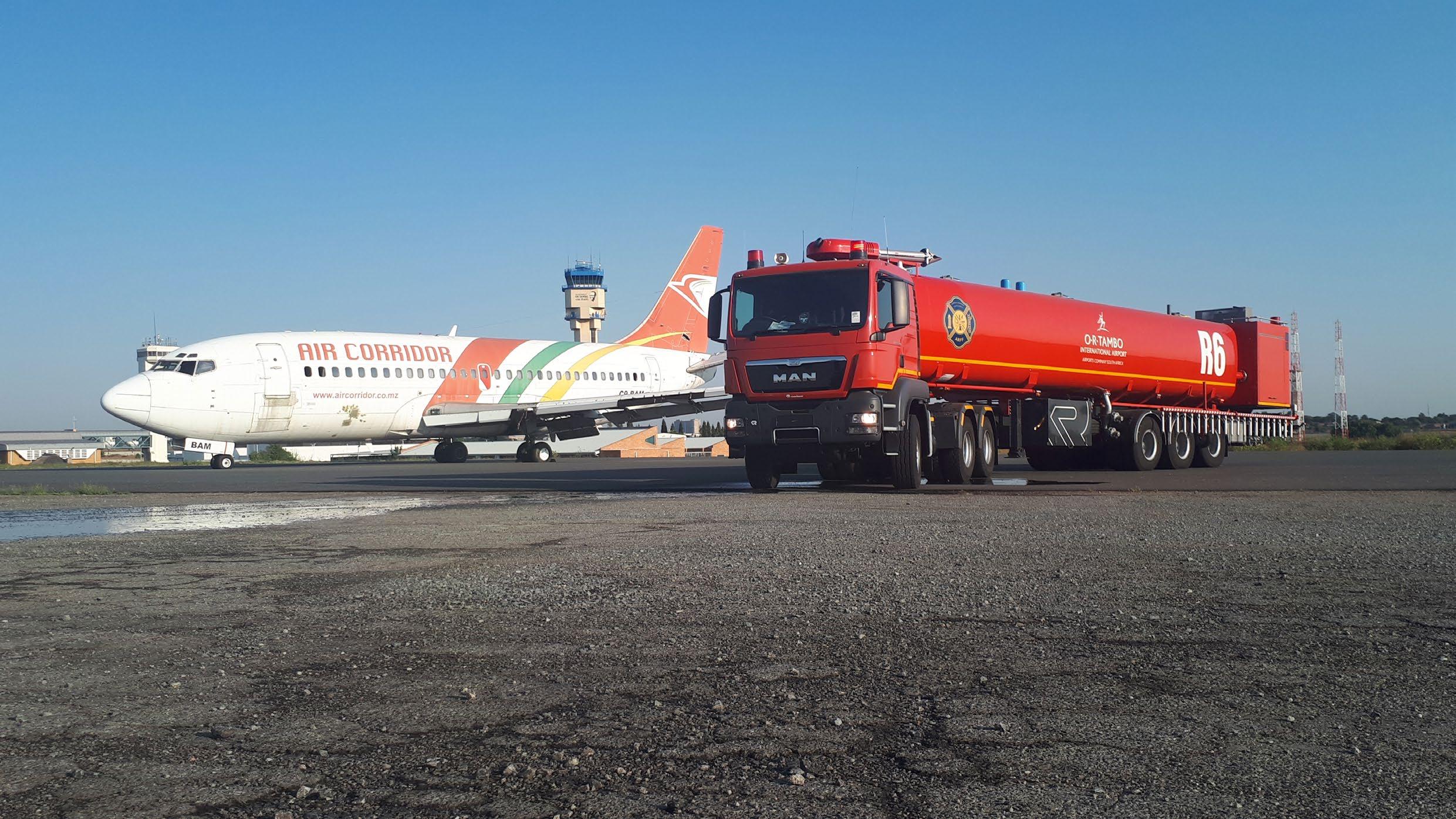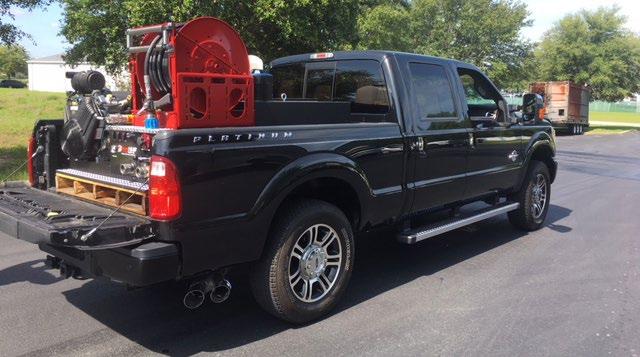
8 minute read
Commanding the wildland/urban interface
By Colin Deiner, chief director, disaster management and fire brigade services, Western Cape Government
Recent major wildland fires across the world, particularly in Australia, Portugal and California, have stressed the increasing threat that major wildfires pose to inhabited areas
Advertisement
Recent major wildland fires across the world, particularly in Australia, Portugal and California, have stressed the increasing threat that major wildfires pose to inhabited areas. More and more people are moving into the wildland urban interface (WUI) for different reasons. This places an extra responsibility on both urban fire services and specialised wildfire services to realise the added risk posed by this situation and to develop strategies and tactics to support each other during such operations.
What is the WUI? The term ‘wildland’ refers to an area in which development is essentially non-existent, except for roads, railroads, powerlines, etc and any structures are widely scattered. The wildland/urban interface is defined by the US National Wildfire Coordinating Group as the zone where structures and other human development meet or intermingle with undeveloped wildland or vegetative fuels. This is the area where a wildland fire can potentially ignite structures. Due to the area of fire spread caused by a wildfire the risk is clear that several structures could be affected if the conditions are right.
There are broadly two types of people that live within the WUI. The first group is comprised of low income and poverty stricken communities who have mostly settled in cities to find work and escape the depravations of the rural areas. They live in shacks in informal settlements on the urban edge, which are constructed of mainly flammable materials with no fire protection whatsoever. These people are not only at risk from wildfires that have started outside their occupied spaces but are also capable of starting fires which could spread into the wildland environment.
The second group is those who fall in a much higher income bracket and occupy dwellings that bring them ‘closer to nature’. Due to their intention to live as close to the
Extreme fire conditions could precede a fire in a WUI area and rapidly spread into the inhabited space causing ignitions of structures through fire and ember exposures from the wildfire
natural environment as possible, they willfully avoid creating a safe barrier between their homes and the wildland environment.
In both cases it becomes increasingly difficult to manage the WUI due to the risk of pre-burns destroying people’s properties. The natural fire reliant environments are compromised to the point that despite recent emphasis on ‘fire use’; many more wildland fires are suppressed compared to those allowed to burn. ‘Fire exclusion’ still seems to be our default approach and this has resulted in changes in vegetation fuel structures and fuel accumulation, leading to more high intensity fires.
Structural fire fighters vs wildland fire fighters The urban fire service environment is normally organised around the placement of multiple fire stations within a city area according to the risk in that particular suburb or industrial area. Response is based on standard operating procedures (SOPs) specific to the incident. Units based on a pre-determined attendance PDA) will respond to a structural fire and commence fire fighting operations in the room of origin, floor of origin or building of origin, depending on the magnitude of the fire.
Protection of surrounding exposures may also be prioritised. Responding to a structural fire in an urban area should, due to the standard PDA, not take longer than a few minutes (or seconds) and control of the fire should also be fairly rapidly achieved ie several minutes to a few hours. The fireground is generally well delineated and the incident commander should be aware of most of the risks he/she is dealing with. Additional resources will firstly come from the service’s own jurisdiction and additional resources from other services might only be called in the event of the primary service being overwhelmed. In most cases, however, there is only one structure to focus on.
A wildland fire, on the other hand, does not conform to the parameters encountered in a structural fire scenario. Firstly, the first response could comprise land owners with wildland fire services arriving as a secondary response. Multiple jurisdictions could be involved from the start and the fire area could range from a small area to several thousand hectares. Seldom would a wildfire response be of a short duration. Often fire crews would be deployed for several hours to several days, even weeks.
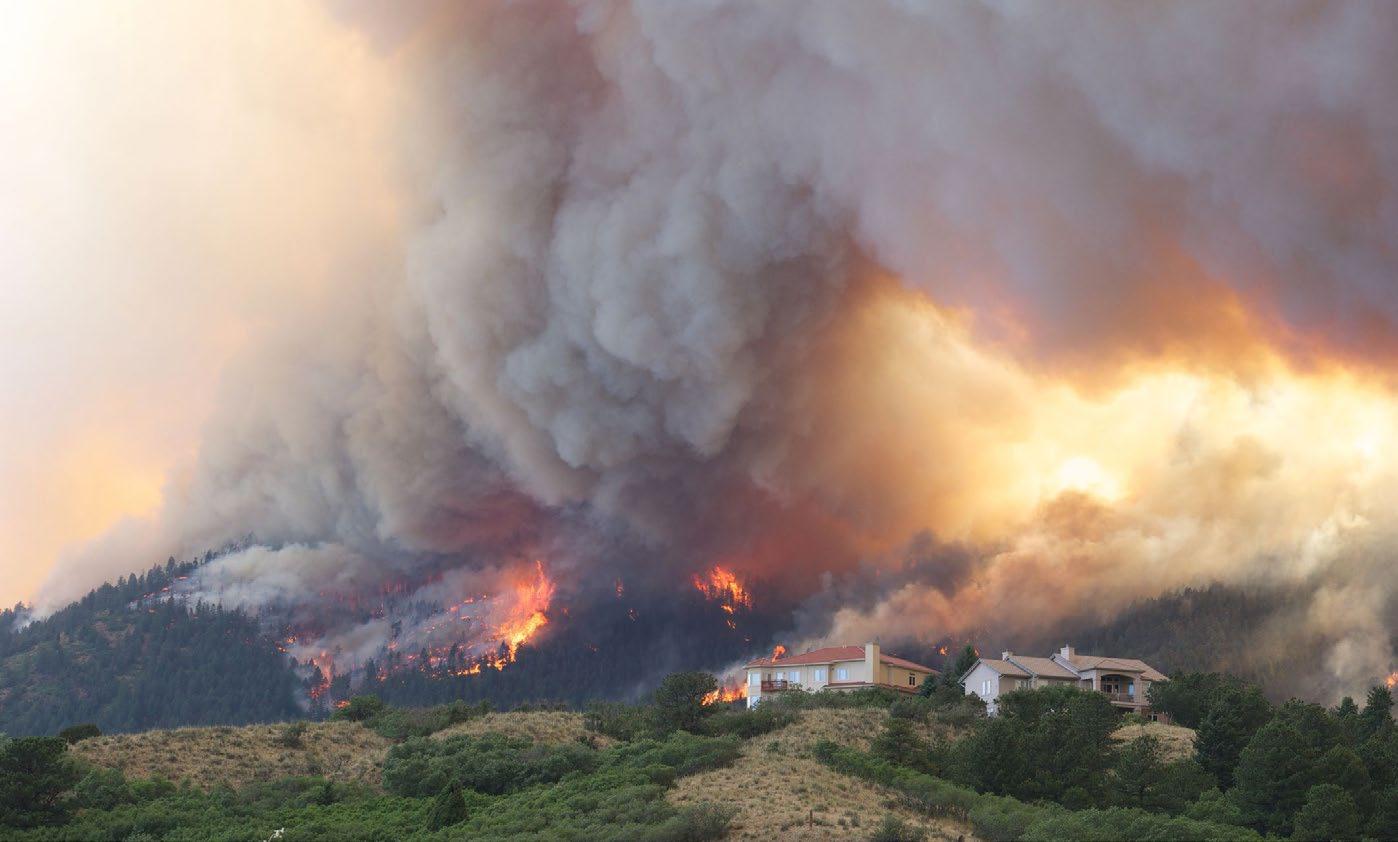
WUI and WUI disasters When a major fire starts burning within the wildland/urban interface, most of the above rules go out of the window. The fire spread will not be dependent on its geographic location but due to a set of circumstances such as fuels, topography and local weather. The initial response should include multiple agencies from several jurisdictions and could impact structures on the interface boundary, whole neighbourhoods and even parts of towns or cities.
Wildland/urban interface fire disasters are frequently preceded by extreme weather conditions such as high wind speed and low humidity. This is the first element of a disastrous situation. The Fire Danger Rating System is quite effective at predicting when such disastrous wildfires are likely to occur and are effectively utilised by wildfire authorities during their high risk seasons. The situation is not necessarily the same fore WUI fires. The Southern Cape fire in 2017, which destroyed more than 900 formal dwellings in the coastal town of Knysna, occurred outside of the region’s wildfire season and therefore provided little warning of the major fire, which followed a province-wide storm blowing in from the western parts of the province. The region was, at that stage, experiencing a major drought disaster, which increased the risk exponentially.
So how does a WUI fire disaster happen? Extreme fire conditions could precede a fire in a WUI area and rapidly spread into the inhabited space causing ignitions of structures through fire and ember exposures from the wildfire. These structures are exposed to the same fire conditions and embers from exposed combustible elements spread to other structures leading to multiple ignitions. This could quickly overwhelm the first responding agencies. The time it will take assisting services to respond, will be critical. It is here where a fire could take hold of the urban area and grow to the extent that it rapidly compromises the effectiveness of all fire fighting services. You are now dealing with a disastrous situation, which will destroy multiple structures before control can be achieved.
WUI response Incident commanders will quickly be confronted with multiple priorities. The following three priorities should be key: 1. Life 2. Incident stabilisation 3. Property and environment preservation

Your objectives will be informed by these priorities and should outline what must be done to ultimately control the fire. Always ensure that the objectives are focused, measurable and achievable within the time allocated to them. They must also all be aimed in the same direction. The one that leads to the fire being controlled. Crucially these objectives and the expectation of how they will be achieved must be communicated to all forces clearly.
Forecasting fire behaviour happens at all levels and should be a prime component of the incident commander’s planning. Command should consider all inputs from the various sectors and if necessary include them into the incident objectives.
In a fast moving WUI fire, the incident commander can delegate objectives down to branch level and allow them to best manage their individual area by implementing the appropriate tactics based on fire behaviour. Communications could become difficult at this stage and it will then be important that all branches within the command system are able to operate with a clear set of instructions.
Decisions on the evacuation of people, road closures, animal control, etc will be informed by the anticipation of fire behaviour in the next few hours. Early deployment of the units that will be responsible for these activities will ensure rapid execution when it becomes necessary and will also enable these resources to reach the areas they are assigned to without being prevented to get there due to the spread of the fire.
Staging of resources in the WUI environment will differ from a purely rural wildfire due to some of them having to be located in urban areas. It might be difficult to locate areas able to accommodate large numbers of resources and the consideration should be for a number of secondary staging areas in relatively close proximity to one another.
Aerial support becomes a highly focused activity in this environment. Coordinating water drops within the wildland environment will have to be focused on controlling the fire in that space and preventing its migration into the urban spaces. An early response of aerial resources will greatly enhance the chances of achieving just this. Careful coordination between the air operations manager and the ground crews working on the urban edge must be achieved through clear communication. Water drops need to be done with almost surgical precision.
Evacuation of the public will have a number of challenges and might also require the deployment of a large medical group. The medical group supervisor should be embedded at the incident command post where he/she can direct resources in coordination with the respective geographic branch and/or division. The staging of emergency medical staff and ambulances should be away from the command post and staging area and allow for rapid and safe response to and from triage areas.
In closing With the large scale densification of cities, we are seeing more and more of these fires and it is seldom that any major wildfire does not interface with habituated areas. Equally, there are very few large-scale WUI incidents that won’t require mutual aid and multiple agencies and disciplines working together as a team.
Agencies responsible for dealing with wildfire must, together with their urban fire services brothers and sisters, plan for the types of scenarios that will test them all in an unnatural situation that could eventually become the norm.
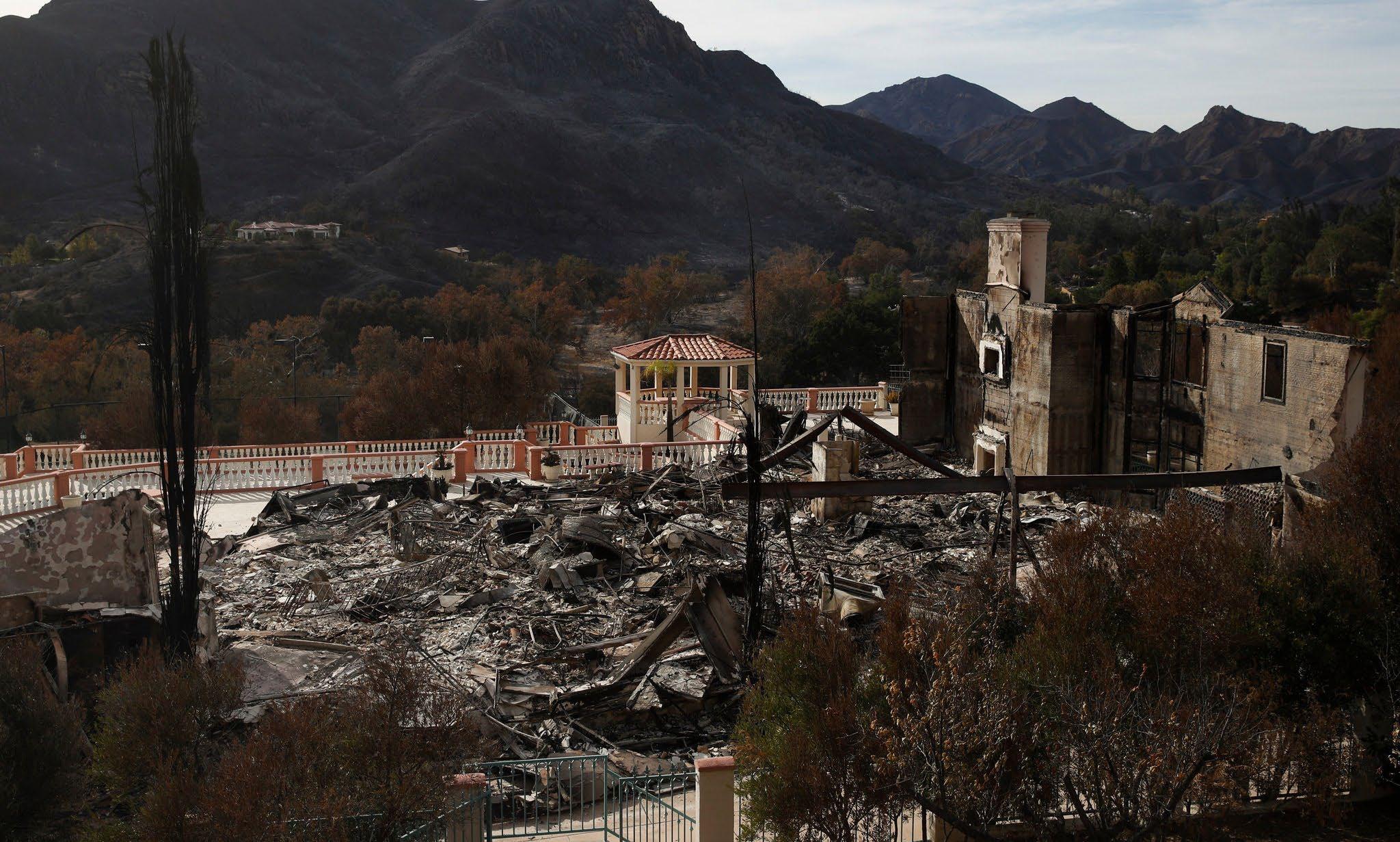
The time it will take assisting services to respond, will be critical
Decisions on the evacuation of people, road closures, animal control, etc will be informed by the anticipation of fire behaviour



